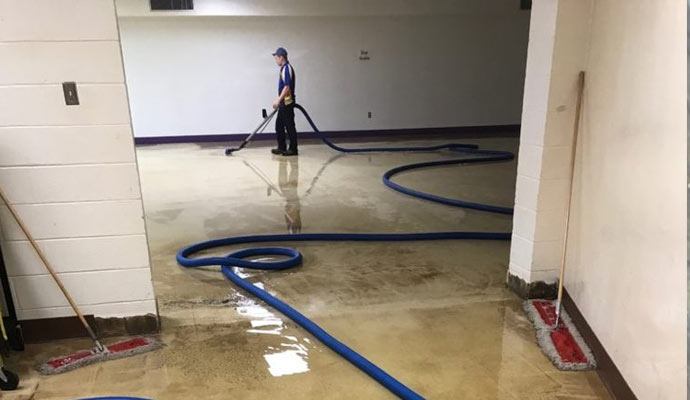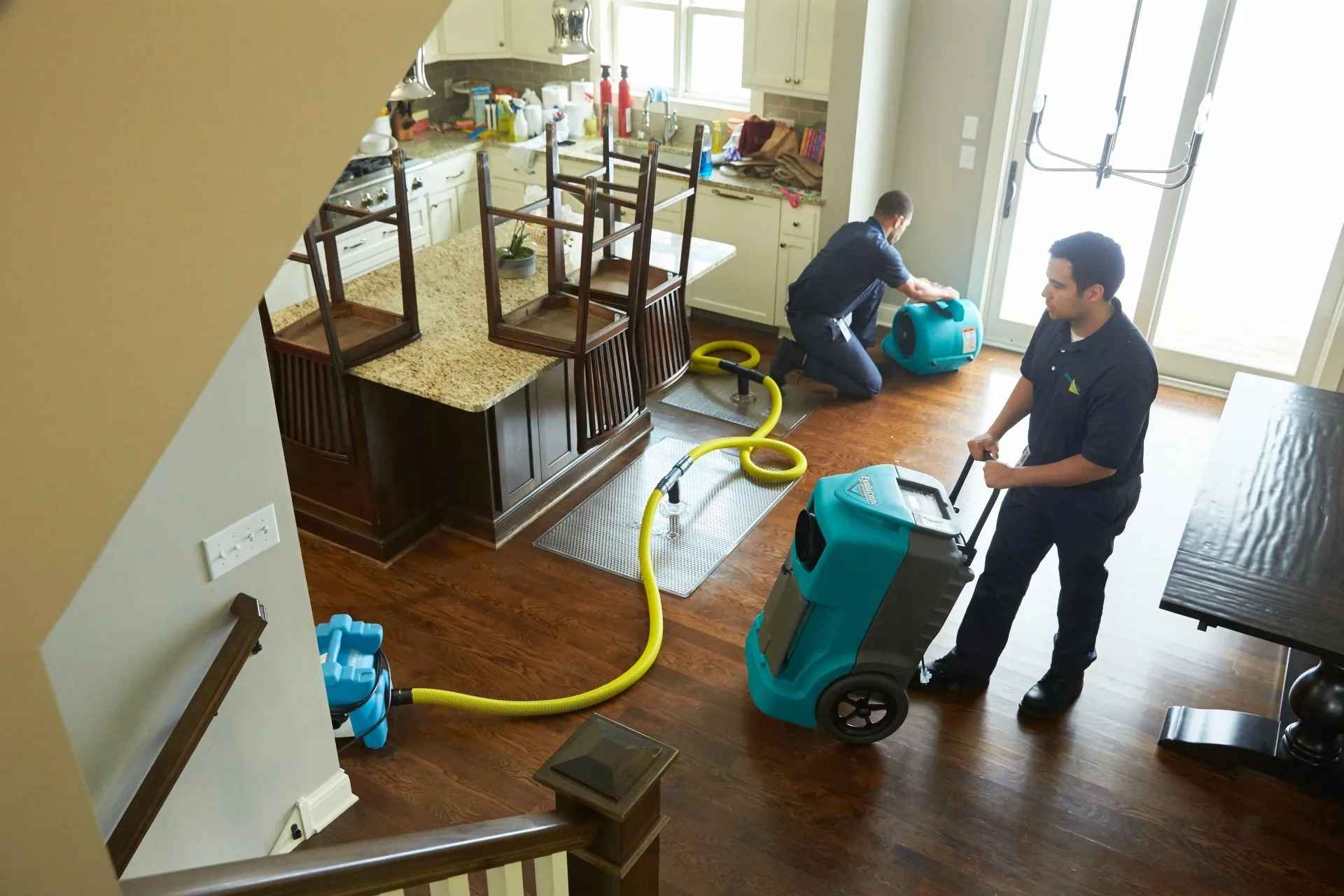How to maintain results after water damage restoration projects
Everything About Water Damage Restoration: Secret Truths and Advantages You Should Know
Water damage remediation is an essential process that every property owner must recognize. It entails reviewing the type of damages, whether tidy, gray, or black water, and executing an organized remediation method. Acknowledging the indications of water damages early can substantially influence the performance of the remediation. Comprehending the steps included and the significance of prompt action can protect against additional issues. What aspects should property owners think about when deciding between professional solutions and DIY techniques?
Understanding Water Damage: Types and Creates
What elements add to water damages, and just how can they be classified? Water damages can be classified right into three major groups: tidy water, grey water, and black water. Tidy water originates from sources like broken pipelines or rain, posturing very little health threats. Gray water, which might come from home appliances like dishwashers or cleaning makers, includes contaminants that require careful handling. Black water, originating from sewage or flooding, positions serious carcinogen and demands prompt focus.
The sources of water damages are diverse. Usual aspects include pipes failings, roofing leaks, natural disasters, and bad drainage systems. In addition, human errors, such as leaving faucets failing or running to preserve appliances, can exacerbate the trouble. Comprehending these types and triggers is crucial for reliable prevention and removal methods, guaranteeing that building owners can take positive actions to safeguard their homes against the harmful impacts of water damages.
Indications of Water Damages: Just How to Determine Concerns Early
How can one identify the early indications of water damages prior to it escalates into a much more severe trouble? Identifying these issues promptly can conserve homeowners from comprehensive repairs. Common indications consist of visible water stains on ceilings or wall surfaces, which usually appear as yellowish or brown spots. An additional indicator is peeling or gurgling paint and wallpaper, recommending moisture underneath the surface area. Moldy smells can also signify hidden mold development, a direct outcome of long term wetness. Additionally, bending or fastening of floors may suggest excess wetness in the underlying structures. Home owners need to regularly check areas susceptible to water exposure, such as basements, kitchen areas, and restrooms, for any kind of indicators of leakage or dampness. Ultimately, an abrupt rise in utility costs might hint at undiscovered leakages. By recognizing these very early signs, people can take aggressive procedures to resolve water damage before it aggravates.
The Water Damage Remediation Refine: Step-by-Step

Next off, the drying out process starts, using air moving companies and dehumidifiers to eliminate dampness from wall surfaces, floors, and individual possessions. After the area is extensively dried, cleansing and sanitization occur to get rid of impurities and odors.
Repair services and repair job is carried out, which may consist of replacing broken materials, painting, or refinishing surfaces. Throughout the procedure, documentation is preserved for insurance coverage objectives, making sure that all activities taken are tape-recorded. Each step is important to recover the building and assure a secure living environment for occupants
Relevance of Timely Remediation: Why Performing Fast Matters
Timely remediation following water damages is essential, as delays can result in escalating concerns such as mold growth and structural deterioration. Water can swiftly leak right into permeable products, producing an excellent atmosphere for mold and mildew spores to flourish. Within 24-48 hours, mold and mildew can begin to develop, presenting wellness threats and further making complex reconstruction efforts.

Furthermore, long term direct exposure to dampness can damage the architectural integrity of structures, resulting in expensive repair services and prospective security risks. Acting quick not only decreases damages however also lowers the general cost of repair. Insurance coverage business typically prefer timely action, which can promote smoother insurance claims procedures and quicker financial recovery for homeowner.
Eventually, prioritizing prompt remediation maintains residential property value, boosts safety and security, and promotes a much healthier living environment. For these factors, swift activity is vital in the results of water damages, emphasizing the value of dealing with issues as soon as they emerge.
Professional vs. do it yourself Remediation: Pros and Disadvantages
When taking into consideration water damage remediation, property owners commonly weigh the alternatives of expert services against DIY techniques. Price factors to consider play a considerable role, as professional repair can be much more pricey yet may provide premium know-how and specific equipment. Each option has its disadvantages and pros, influencing both the performance and effectiveness of the reconstruction procedure.
Cost Factors to consider
While property owners might think about both click here to read professional services and do it yourself strategies for water damages remediation, each alternative offers distinctive financial ramifications and advantages. Specialist repair solutions typically include higher ahead of time prices because of labor, devices, and expertise. They can accelerate the repair procedure, possibly reducing additional damage and linked costs. On the various other hand, DIY restoration might show up much more budget-friendly initially, as it generally includes reduced straight expenditures. Homeowners must factor in the possibility for errors, which can lead to extra extensive damages and greater long-term expenses. Eventually, the selection in between professional and do it yourself repair rests on the house owner's budget plan, the severity of the damages, and their willingness to invest time and effort into the repair process.
Knowledge and Tools
A noteworthy distinction in between expert and do it yourself water damages remediation exists in the competence and equipment offered for each and every method. Specialists have specialized training and experience, enabling them to examine damages accurately and carry out reliable remediation methods. They make use of innovative equipment, such as industrial-grade dehumidifiers and wetness detection tools, which can significantly quicken the drying out process and stop more problems like mold and mildew growth. In contrast, do it yourself reconstruction typically depends on standard household tools and methods, which may be much less reliable and can lead to incomplete fixings. While DIY can save money, it likewise brings dangers, including possible wellness threats and comprehensive damages otherwise executed properly. Eventually, selecting between specialist services and DIY techniques depends on the extent of the damages and the homeowner's capacities.
Advanced Techniques in Water Damages Remediation
Although water damages repair has typically relied upon typical methods, progressed techniques are now transforming the industry. Innovations such as thermal imaging modern technology permit repair professionals to spot hidden moisture behind wall surfaces and under floors, ensuring detailed drying procedures. Furthermore, using high-capacity dehumidifiers speeds up dampness removal, substantially minimizing the threat of mold growth.
Another advancement is the execution of antimicrobial therapies, which hinder mold and mildew and microorganisms development, protecting the health of owners. Advanced drying out devices, consisting of air movers and specialized drying floor coverings, boosts air flow and promotes quicker evaporation of moisture.
In addition, real-time monitoring systems currently offer continual assessments of wetness levels, enhancing and allowing prompt interventions remediation initiatives. These improvements not just enhance the performance of water damage restoration but likewise add to much better results for properties, reducing long-lasting damages and prices related to water-related events.
Stopping Future Water Damages: Tips for Homeowners
To stop future water damage, home owners ought to embrace positive measures that deal with potential susceptabilities in their residential or commercial properties. Regular maintenance of gutters, roofs, and downspouts is crucial; making certain these are free from particles can avoid water buildup. Home owners must additionally check plumbing systems for leaks and change damaged pipes quickly. Installing sump pumps in basements can ward off flooding during hefty rainfalls, while utilizing water alarm systems can supply very early detection of leakages.
Additionally, securing windows and doors aids stop rainfall invasion. Landscape design needs to direct water away from the structure, employing correct grading and drain solutions. Home owners may also take into consideration waterproofing basements and crawl areas to additional mitigate dangers. Inevitably, maintaining an updated stock of home things can help in insurance claims must harm happen. By implementing these methods, property owners can meaningfully lower the probability of water damage and secure their investments.
Often Asked Questions
Just How Much Does Water Damages Remediation Commonly Expense?
Water damage remediation typically sets you back between $1,000 and $5,000, depending upon the extent of the damage, the sort of products impacted, and the area. Complicated situations might exceed this array significantly, requiring professional evaluation.
Will My Insurance Policy Cover Water Damage Repair Costs?
Insurance protection for water damage remediation differs by policy and circumstances. Commonly, homeowners' insurance may cover problems from abrupt cases, however exemptions may apply. It is advisable to review the policy details or seek advice from an insurance coverage agent.
How Lengthy Does the Reconstruction Process Normally Take?

What Should I Do Right Away After Finding Water Damages?
Upon discovering water damages, one must immediately turn off the water resource, remove important items from the afflicted this location, and guarantee correct air flow. Seeking professional assistance is important for effective damages evaluation and repair.
Are There Specific Products That Are Immune to Water Damage?
Specific materials, such as treated wood, concrete, and fiberglass, display better resistance to water damage. Additionally, water resistant finishings and synthetic textiles enhance resilience, supplying reliable security versus wetness and prospective wear and tear over time.
Water damages can be classified right into 3 primary categories: tidy water, grey water, and black water. When thinking about water damage reconstruction, home owners often weigh the alternatives of specialist solutions versus Do it yourself approaches. While home owners may think about both specialist solutions and DIY methods for water damages restoration, each choice presents distinct financial ramifications and advantages. Water damages repair generally sets you back in between $1,000 and $5,000, depending on the degree of the damage, the kind of materials impacted, and the place. Upon discovering water damages, one need to instantly transform off the water resource, eliminate beneficial products from the damaged area, and warranty proper air flow.